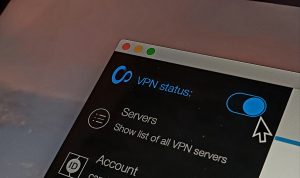No one wants to think about their enterprise experiencing a cyber-attack. The past few years, however, have proven that no one is safe from this phenomenon. Some of the biggest organizations in the world, tasked with keeping people’s private information safe, have fallen victim to hackers. Hundreds of millions of people have had their data compromised in single events.
Data breaches aren’t just a tragedy for the people’s lives affected by them. They can be disastrous for the enterprises involved in them. Here are four tips for responding to an enterprise cyber-attack.
Act As Soon As Possible
The clock starts ticking once you realize your organization has come under fire of a cyber-attack. Actually, the clock has likely been ticking for a while. On average, it takes over 200 days for a company to realize that its network has been breached.
At this point, it’s imperative to do whatever possible to limit the scope of the attack. Here are three phases that need to happen in this process:
- Identify the threat. This means knowing exactly what’s going on, both in terms of context and extent. It’s important to give all the information available to your team so they can make the best possible moves. Enterprise incident response for cyber-attacks can be improved when employing network security services. Having a third party there to monitor network activity can drastically decrease the amount of time it takes to find and resolve attacks.
- Contain the threat. Once you know what you’re up against, you need to act to stop it as quickly as possible. Get all hands on deck and do whatever’s necessary to stop the attack in its tracks.
- Regain control. Don’t let down your guard until you’re absolutely sure the threat has been properly contained and eradicated from your network. Evaluate the situation and use the experience to improve future responses.
Have a Plan, Execute It If Necessary
While the previous section sounded swell, all those things aren’t going to happen if you’re standing flat-footed when an attack arrives. It’s essential to have a plan before having to deal with a cyber-attack.
The size, scale, and logistics of your enterprise are all going to play a role in how you should build your emergency plan. It’s wise to talk with security experts and have them work along with your own IT department to develop the best possible protocol.
Be Transparent and Aware of Laws
The biggest victims of cyber-attacks often aren’t companies themselves, but consumers. These are the millions of people whose credit cards, identities, passwords, and other forms of information are stolen every year.
It’s important for enterprises to keep people in the loop when there has been a data breach or other attack. First, this can allow them to take some forms of action to protect themselves. Furthermore, it’s often the law that organizations need to notify people—including law enforcement—if there has been a breach of information.
The way your enterprise responds to a data breach or cyber attack will influence people’s opinions of your organization. It’s often possible to bounce back if cybersecurity incidents are handled proactively and professionally. But the opposite can also be true if they’re not.
Know What to Back Up
Back-ups can be your best friends when it comes to rolling with the punches of cyber-attacks. Ransomware is one kind of threat that thrives on the idea that your sensitive information isn’t backed up properly. Attacks that hold your data hostage become much less scary if you’re sure your data is still safe.
Cyber attacks are just a part of how the world works now. They’re going to continue being a threat to people and businesses for the foreseeable future. Following these guidelines can make responding to an enterprise-level attack much less painful.





